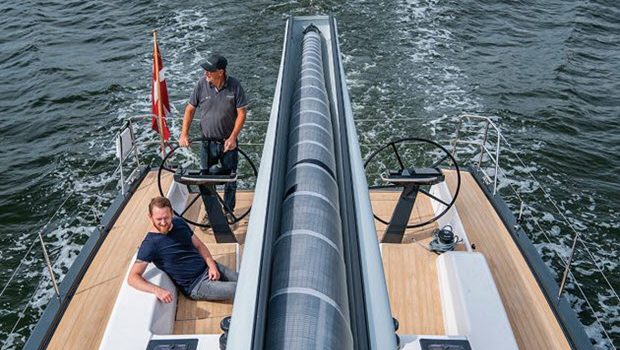Sailboats are meant to sail well
Published on August 24th, 2020
We try to remain open-minded, but whenever there is a boat with in-mast furling, we struggle. Gone is the proper mainsail, replaced by a sad triangle unable to offer worthy performance. Ugh!
But we are the convenience generation, so Yachting World asks the question: Is in-boom furling the next big thing in sail handling technology? Given the choice, we hope so…
Even though this remains an expensive option, in-boom furling is one that a growing number of boat owners are adopting.
Key advantages include one person being able to handle the mainsail entirely from the cockpit, especially if powered coachroof winches are available. There are no lazyjacks to snag battens and no messing with the miles of reefing pennants that are needed for slab reefing.
Yet these systems don’t need a sail with the hollow leech and very flat cut that’s necessary for in-mast furling. They therefore have the potential to offer similar sailing performance to boats with conventional slab-reefed mainsails.
Given how neatly the sail is furled, and the absence of highly loaded reef points in the leech, in-boom systems also have potential to increase a sail’s lifespan.
Unlike in-mast furling, all the mechanical elements can be reached from the deck, which facilitates inspection, service and repair, while minimizing weight aloft.
If the system does fail, the sail can be dropped and secured around the boom in the same way as a conventional mainsail without lazyjacks. However, the lack of luff slides or cars to keep the front of the sail under control can make this a much more difficult task than for a conventional cruising yacht mainsail. Full report.









 We’ll keep your information safe.
We’ll keep your information safe.